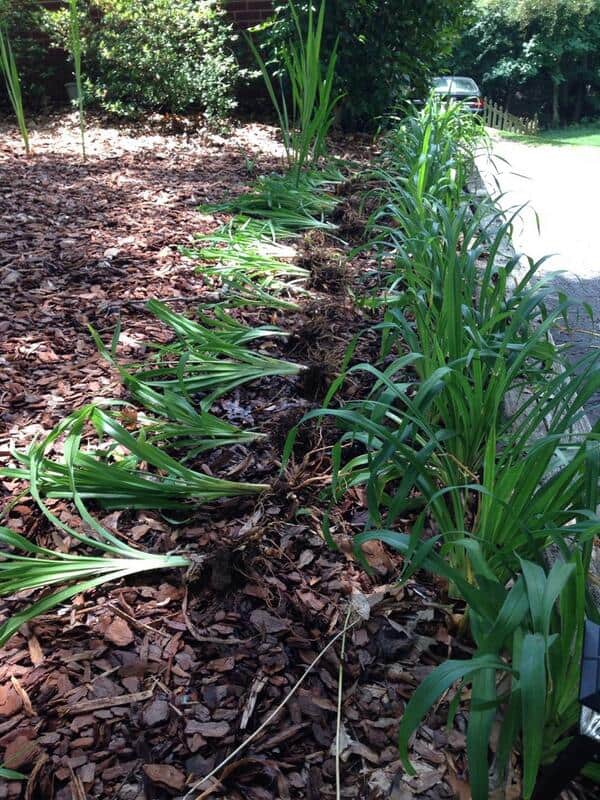Are you waiting for Lilies to bloom and make a colony through seeds themselves?
If you are still on standby, do not live into fallacy.
In general, Lilies spread immensely on their own from the bulbs extending up to 36 inches wide during their growing season continuously for 2-3 years. To make Lilies spread, you must divide the bulbs and transplant them into a pot or garden.

The Lilies show a decrease in flower size when they undergo unhealthy competition among themself.
So to not let them kill each other in the name of nutrients and light, I tried to divide the Lilies, ensuring that my garden still sees the blooms of Lilies each year.
Table of Contents Show
Do Lilies Spread on Their Own?
“Asiatic Lily is a true Lily, but day Lily is not a true Lily.” Sounds confusing, right?
The Lily I am talking about is a true type, growing from bulbs similar to Daffodils and spreading on their own.
Lilies multiply rapidly from their bulbs as a perennial herbaceous flower and give offset yearly. They cover the growing ground with the clumps of Lilies while not true to type grows from rhizomes and tubers.

The multiplication occurs more vigorously on ground Lilies than on indoor Lilies as they have enough space to spread their bulbs in the ground.
Even the axils of leaves have mini bulbs known as bulbils, which can spread the number of Lilies.
Moreover, Lilies can multiply independently from mini bulbs or bulblets near the central bulb but are smaller and lateral to the main bulb.
How Do Lilies Spread?
Lilies have a lifespan of 2-3 years in the USDA zone 4-9, which are perennial. But those that live in the hotter and colder zones are annuals.
However, both Lilies have an equal course of spreading.
Lilies can propagate sexually by seeds and asexually by bulbs, bulblets, or scales. But the safest and most effective method is the asexual method which allows lilies to self-propagate.

Houseplant Lilies cannot self-seed, so you need to sow them manually in sandy loam soil, receiving enough daily direct light.
To grow Lilies sexually, you need to collect seeds from the deadhead flowers by snipping off the mature flowers from the Lilies.
Usually, Lilies bloom from May to late September, depending on the variety.
But most gardeners do not like to propagate from seeds as flowering from seeds takes nearly 3 to 4 years.
Meanwhile, vegetative propagation from bulbs and scales lets you enjoy blooms as soon as possible so that Lilies can spread on their own.
Lilies are vigorous growers when bulbs come into action, then seeds.
But the main concern should not be on propagation now! Instead, we should focus on thinning the lilies to keep the garden clean.
What to Do When Lilies Spread?
If you provide suitable location and care, the spreading of Lilies becomes easy in summer.
I loved how the beautiful reddish to pink hue flowers covered my garden providing a lavish look.

But suddenly, the flower size started to decrease after a few days, and the plants’ stems spread everywhere.
Thus it would help if you managed the overcrowding of Lilies before the plants get bushy and host snakes and other reptiles.
If you need a crystal clear guide, scroll down!
Dividing Lilies
Lilies that naturally multiply get congested over time. That is how our roles as gardeners set off into action.
Division can be the best option to decrease the density of the plants and create a medium for the next growing season.
- Choose the Lily that has already reached maturity.
- Start loosening the soil 3-4 inches from the base of the Lily with the help of a shovel. If you lack it, you can use a gardening fork.
- Dig 6 inches deep from one side and try to pull out the Lilies towards your side.
- If they do not come out, try to dig from the other side. Continue digging in a circle till the soil loosens.

- Afterward, wear gloves to pull the Lilies with your hands.
- Remove the soils from the bulbs and gently separate the attached bulbs. If the bulbs are hard to separate, try using a sterilized garden knife.
- Stack the bulbs based on the size, as larger bulbs of 16/18 cm give blooms within a single season while smaller bulbs of 14/16 cm take four seasons.
- Also, separate the diseased bulbs from the healthy bulbs and throw them in the dustbin.
- Twist the stem from the top of the bulbs clockwise and anticlockwise until it separates from the bulb.
- Now, be ready to transplant the bulb.
- And if not, store them in a plastic bag containing moist sphagnum moss and put them inside the refrigerator.
You can store the bulbs in the fridge for eight weeks.

It is better to do it in the late summer or early fall after the leaves and stems have turned brown to ensure the entire focus of the plant in the root development.
Transplanting Lilies
After dividing and collecting Lily bulbs, it is time to plant to grow into busy Lilies.
Depending on your area, you can directly start transplanting them into the ground or pot.
- Firstly, choose a location that receives full sun.
- Use the shovel to dig a hole three times the height and twice the bulb’s diameter.
- Fill the hole up to 2 inches with organic compost or perlite mix to provide enough nutrients to the bulb.
- Place 3 to 5 bulbs in the compost at least 0.5 inches apart.
- And try to keep a gap of at least 8-18 inches between the clusters of bulbs.
- Cover the hole with soil and press it lightly to bring it to ground level.
- Lastly, water the soil as soon as you plant the bulbs until it reaches 6 inches deep from the surface.

You can even transplant the lilies into a container of three to four times the height and two to three times the bulb’s diameter with enough drainage holes.
Add a compost mix up to 2-3 inches from the bottom of the pot and level them for a smooth surface.
After that, you can put 3-5 bulbs per pot with a gap of 0.5 inches between the bulbs, and pointed tips should face upward.
Lastly, cover them with 6-8 inches of potting soil and water it till the water reaches 6 inches below the surface.
Tips for Care Lilies after Transplanting
After transplanting, Lilies may need additional care to adjust to the new home and environment!
So, shower some love on your Lilies by fulfilling all the requirements below!
- Provide the lilies with at least 8-10 hours of direct sunlight.
- Lilies hate humid climates, so keep the humidity between 50-65%.
- As a temperate perennial, lilies prefer temperatures between 68-85ºF and no less than 60ºF at night.
- Water the plant once a week up to 1 inch from the surface during their growing stage.
- Apply 10-10-10 N-P-K dose at the beginning of the growth and 10-30-20 N-P-K before the flowering season to ensure the peak condition of lilies.
- Lilies cannot tolerate soggy soil so provide them with acidic to neutral, well-draining, sandy loam soil with a pH of 5.5-7.
- Avoid pruning in the early stage of growth. Prune Lilies once after flowering for the next seasonal flower.
- Lilies rarely require repotting but demand division once roots appear crowded.

- Lilies are more prone to pests like aphids, beetle, scales, and whiteflies. You can control the infestation by spraying insecticidal soap and neem oil.
- Diseases like botrytis blight, stem rot, and root rot affect the Lilies, which you can control by avoiding overwatering and removing the infected part.
Editor’s Perspective
Lily’s height can range to 2-6 feet, making them one of the favorite cut flowers for your vase and guest room.
Moreover, they supply you with seasonal flower and makes your garden lively throughout the season.
But they have the drawback of not being able to control their growth, spreading rapidly as a Fire if not intervened in the middle.
So keep dividing the Lilies in their growing season to enjoy the large, healthy blooms. Happy Gardening!
